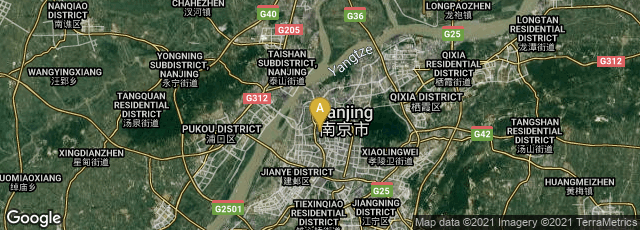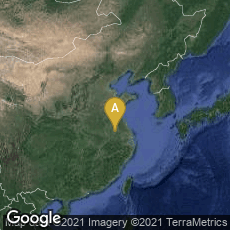Between 1375 and 1398 the
Hongwu Emperor, Zhu Yanzhang (Ming Taizu), founding emperor of the
Ming dynasty, ordered the printing of a
one Kuan note, the largest paper money ever printed, the earliest numismatic printing, and the earliest commercial printing on paper. The note in my collection, printed on gray mulberry paper, measures 340 x 220 mm. Ornamentation and text on my note are faded but legible, as in virtually all surviving copies.
1. There are two red (vermilion) seal handstamps, one at each side, are located on the note. These seals are the equivalent of signatures on modern bank notes. The red imperial seal was applied on the reverse.
2. At the top are six chinese characters: "Ta Ming t'ung Hsing Pao Cha's (Treasure Note of the Great Ming) in regular (K'ai Shu) style. Text is in black.
3. The outer frame is decorated with dragon patterns surrounding the text. Ornamentation is in black.
4. The upper center is printed with the face value "1 Kuan" (One string) in regular (K'ai Shu) style. "One String" was then equivalent to 1000 copper cash coins or one tael of purse silver, or one-fourth tael of gold.
5. The middle center is printed with diagram of ten piles, each containing ten copper cash coins, each coin representing the value of 10 cash coins (equally 1000 copper cash coins).
6. On both sides of the center are eight Chines characters "Ta Ming Pao Ch'ao, Tien Hsia T'ung Hsing" (The Great Ming note, circulates everywhere) in royal (Chuan Shu) style.
7. The Chinese writing in the lower center may be translated as "This Ta Ming Pao Cha'o is printed with the approval of the Emperor through the Hu Pao is equivalent to the copper cash coins. Those who counterfeit Ta Ming Pai Cha'o will be beheaded, while an informant will be rewarded with 250 taels of silver, with confiscated property of the convicts into the bargain".
The first one kuan banknote was included in the British Museum project, A History of the World in 100 Objects, selected by the Museum's Director, Neil MacGregor (Broadcast by BBC 4 in 2010). No copies of the one kuan note were known until around 1900 where a cache of notes was discovered in the base of an overthrown statue of Buddha. The second find was made in Peking in 1936 when a pile of notes was uncovered during the demolition of one of the city walls.
The beginning of the 15th century saw a high rate of inflation, primarily caused by the excessive printing of bank notes. Because of the inflation, and the silver bullion obtained through Chinese trade with the Spanish in Manila, the use of paper money gradually diminished. The first banknotes were not issued in the western world until 1661, when Sweden printed kreditivsedlar (credit notes) as an alternative to their massive copper coins.

